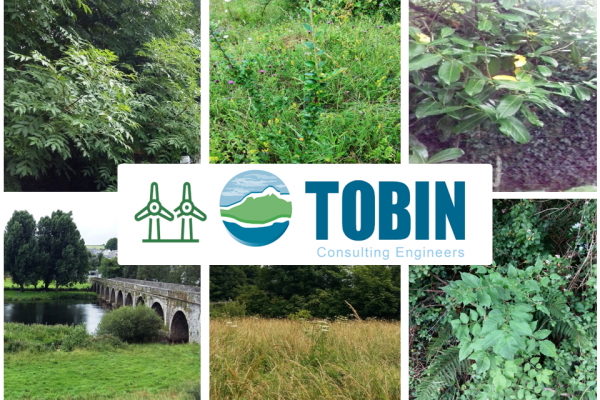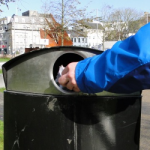Invasive Alien Plant Species (IAPS)
An invasive alien plant species is a species that is non-native to the ecosystem under consideration and whose introduction causes or is likely to cause economic or environmental harm or harm to human health. This is a significant problem in Ireland at present.
TOBIN Consulting Engineers: Advice for managing Invasive Alien Plant Species

What is an Invasive Alien Plant Species (IAPS)?
An invasive alien plant species is a species that is non-native to the ecosystem under consideration and whose introduction causes or is likely to cause economic or environmental harm or harm to human health. This is a significant problem in Ireland at present.
Why are they a problem?
Rhododendron ponticum, native to Turkey, southern Spain and Portugal, invaded Irish oak woods, bogs, and heaths protected under the Habitats Directive. Imported to Ireland as an ornamental shrub, it became rampant in Killarney National Park where up to 650 acres are now infested. It forms large thickets casting deep shade and reduces cover of native plant species. Control measures (mechanical and manual removal) have been ongoing since the 1970s.
Japanese knotweed (Fallopia japonica) was imported into Ireland as an ornamental shrub in the 19th century and has since become widely distributed. Along with Giant Hogweed (Heracleum mantegazzianum) and Himalayan balsam (Impatiens glandulifera) these alien plant species are aggressive colonists of river banks and tend to shade out local/native flora. In winter these plants die back exposing soil, which can subsequently erode into rivers altering the characteristics of the river bed and potentially rendering them unsuitable for salmon spawning. Japanese knotweed also has a powerful root system capable of penetrating concrete causing structural damage to buildings.
How can we manage these species?
A range of management options are available to control and eradicate IAPS. Mechanical means have been successfully employed to remove Rhododendron and Himalayan balsam. For example, Himalayan balsam can be removed by pulling it from its roots as it is an annual species (i.e. it lives for only one growing season during which is produces seeds and dies). Chemical means can be used but there are concerns due to the potential impact on non-target species and the release of herbicides into the aquatic environment. Glyphosate, the broad spectrum herbicide most commonly used, has been proven to have negative effects on aquatic plants. Japanese knotweed is difficult to eradicate without using herbicides and can take 2-3 years of chemical treatment before successful eradication.
How can TOBIN Consulting Engineers help (IAPS Services)?
TOBIN Consulting Engineers (TOBIN) have suitably qualified and experienced Ecologists available in-house who can advise on all aspects of IAPS management. TOBIN services include, but are not limited to:
- The completion of initial IAPS surveys using GIS technology to accurately map their locations; and
- The development of management plans on a case by case basis that provides clear and concise instructions in line with best practice guidelines.
During construction, follow up advice can be provided in relation to any aspect of the plan and site visits can be arranged to provide training and awareness to the site construction personnel.


